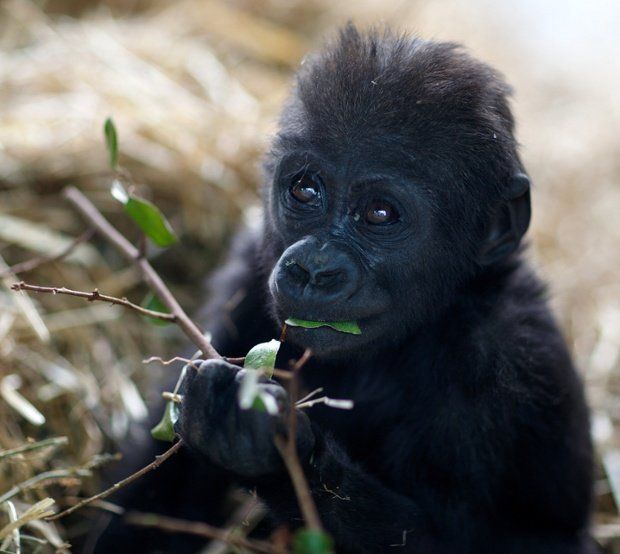In a groundbreaking study, researchers in Gabon have discovered that western lowland gorillas are self-medicating with tropical plants that have medicinal effects, potentially holding the key to future drug discovery. The scientists, who worked with local botanists and healers, identified four plants that the gorillas eat, which also have antimicrobial and antioxidant properties.
The study, published in the journal Scientific Reports, reveals that the gorillas are selecting plants with healing properties, a behavior known as self-medication. This is not the first time that great apes have been observed self-medicating, as a wounded orangutan was recently spotted using a plant paste to heal an injury.
The researchers recorded the plants eaten by western lowland gorillas in Gabon’s Moukalaba-Doudou National Park and selected four trees that were likely to be beneficial, based on interviews with local healers. The plants, which included the fromager tree (Ceiba pentandra), giant yellow mulberry (Myrianthus arboreus), African teak (Milicia excelsa), and fig trees (Ficus), contained chemicals with medicinal effects, such as phenols and flavonoids.
Laboratory studies revealed that all four plants showed antibacterial activity against at least one multidrug-resistant strain of the bug, E. coli. The fromager tree, in particular, showed “remarkable activity” against all tested strains, suggesting that it could be used to develop new treatments for superbugs.
“This suggests that gorillas evolved to eat plants that benefit them, and highlights the huge gaps in our knowledge of the Central African rainforests,” said Dr. Joanna Setchell, an anthropologist at the University of Durham, UK, who worked on the study with Gabonese scientists.
Gabon has vast unexplored forests, home to forest elephants, chimpanzees, and gorillas, as well as many plants unknown to science. However, poaching and disease have led to a huge number of western lowland gorillas disappearing in the wild, and they are now classed as critically endangered on the International Union for Conservation of Nature’s Red List.
The study highlights the importance of preserving these forests and the traditional knowledge of local healers, who have been using these plants for centuries to treat various ailments. The discovery of these medicinal plants could lead to the development of new drugs, but it also emphasizes the need to protect the gorillas and their habitats.



